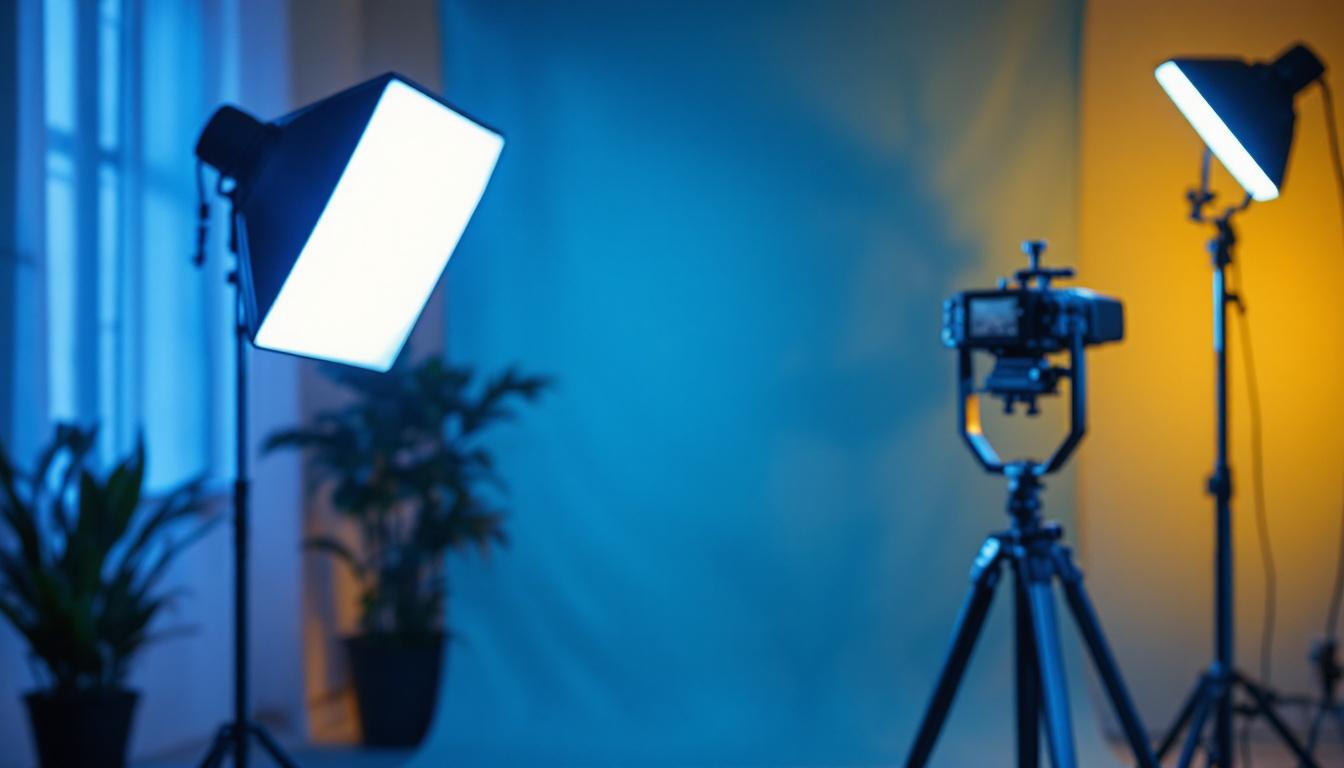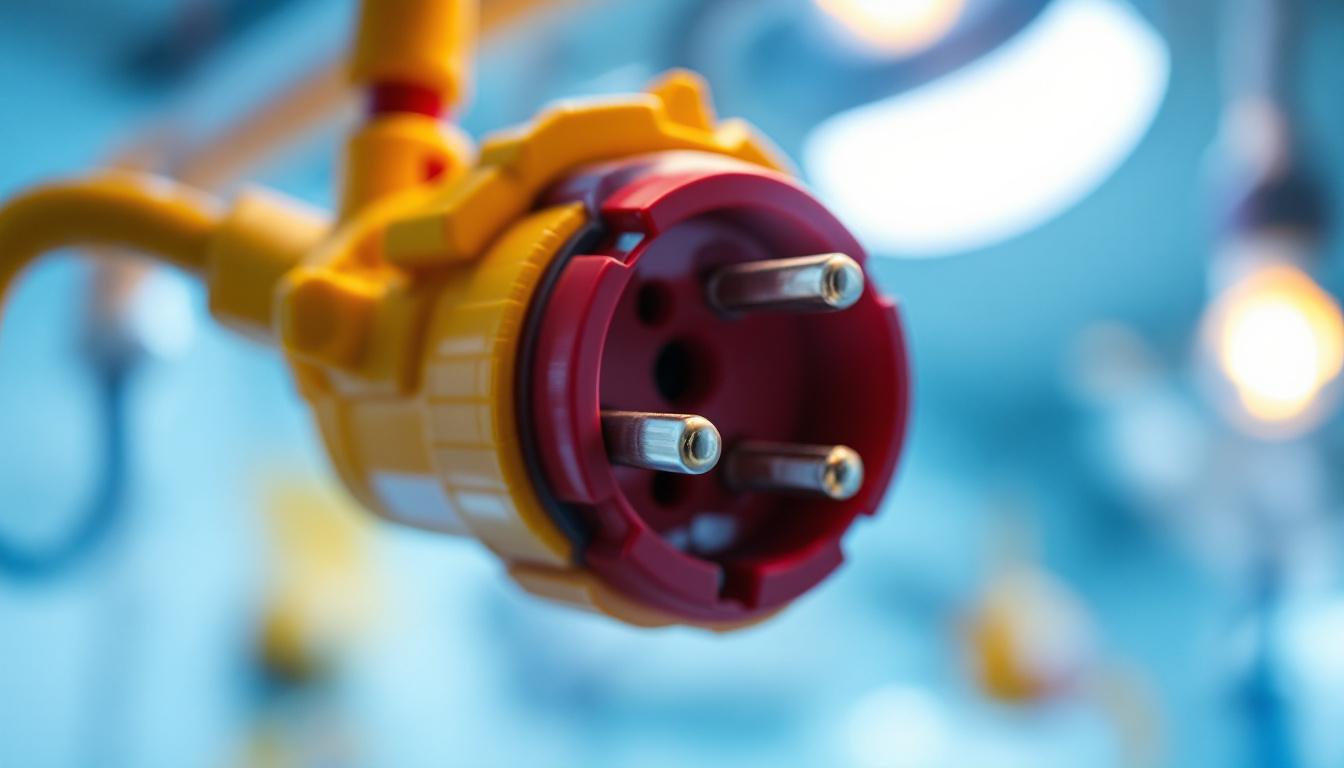
When working on lighting projects, especially in commercial or industrial settings, achieving uniform illumination is a top priority. Uneven lighting can cause glare, shadows, and visual discomfort, which not only affects aesthetics but also safety and productivity. A light balancer is a critical tool or device designed to help contractors and lighting professionals achieve consistent light distribution across a space.
At its core, a light balancer ensures that the intensity of light from multiple fixtures is harmonized. This means that no area is overlit or underlit, creating a balanced environment that meets design specifications and regulatory standards. Whether you’re installing LED panels in an office or high-bay lighting in a warehouse, understanding how to use a light balancer effectively can make the difference between a successful lighting project and one that requires costly adjustments.
In addition to enhancing visual comfort, a light balancer can also play a significant role in energy efficiency. By optimizing the distribution of light, it minimizes the need for additional fixtures or higher wattage bulbs, which can lead to substantial energy savings over time. Many modern light balancers come equipped with advanced technology that allows for real-time adjustments based on occupancy or ambient light levels, further enhancing their efficiency. This adaptability not only contributes to lower utility bills but also aligns with sustainability goals, making it an essential tool for environmentally conscious projects.
Moreover, the importance of a light balancer extends beyond mere functionality; it also has implications for the overall design and ambiance of a space. In settings such as retail environments, the correct lighting can influence customer behavior and enhance product visibility. A well-balanced lighting scheme can create a welcoming atmosphere that encourages shoppers to linger, ultimately boosting sales. Similarly, in educational institutions, proper lighting can improve concentration and learning outcomes for students. Therefore, investing in a light balancer not only addresses technical challenges but also enriches the user experience across various applications.
Manual light balancers are straightforward tools that allow contractors to adjust lighting levels by hand. These can include dimmer switches, adjustable ballasts, or mechanical devices that alter the angle or position of fixtures. While they require more hands-on effort, manual balancers offer precise control and are often used in smaller projects or where fine-tuning is necessary.
For example, in retail environments where spotlighting merchandise is important, manual light balancers enable quick adjustments to highlight specific areas without over-illuminating the entire space. This hands-on approach allows store owners to create a dynamic shopping experience, adjusting lighting to match seasonal displays or promotional events, thereby enhancing customer engagement and driving sales.
With advancements in lighting technology, electronic light balancers have become increasingly popular. These systems use sensors and control units to monitor ambient light and automatically adjust fixture output to maintain balance. They are especially useful in large-scale installations where manual adjustments would be impractical.
Automated light balancers often integrate with building management systems (BMS), allowing for real-time adjustments based on occupancy, natural light availability, or time of day. This not only improves energy efficiency but also ensures consistent lighting quality throughout the day. For instance, in office buildings, automated systems can dim lights in unoccupied rooms, significantly reducing energy consumption while maintaining a comfortable work environment for employees when they are present.
Beyond physical devices, software tools play a crucial role in light balancing. Lighting design software can simulate light distribution before installation, helping contractors plan fixture placement and output levels to achieve optimal balance. Post-installation, some software can analyze light measurements and suggest adjustments.
These tools are invaluable for complex projects, such as sports arenas or theaters, where precise lighting control is essential for both functionality and ambiance. In theaters, for example, lighting designers can use software to create intricate lighting cues that enhance performances, ensuring that every actor is perfectly illuminated while maintaining the overall mood of the scene. Furthermore, many of these software solutions now offer user-friendly interfaces that allow even those with limited technical expertise to visualize and manipulate lighting designs effectively, democratizing the art of light balancing.
Before selecting or adjusting a light balancer, it’s important to understand the space’s lighting requirements. Factors like ceiling height, surface reflectivity, room dimensions, and the function of the space all influence how light behaves. Conducting a thorough lighting audit helps identify problem areas and informs the balancing strategy. For example, in a gallery setting, the type of artwork displayed can dictate the color temperature and intensity of light needed to enhance the visual experience without causing damage to the pieces. Similarly, in a workspace, understanding the tasks performed in different zones can guide the placement and type of lighting to reduce eye strain and improve productivity.
Not all light balancers suit every project. For instance, a warehouse with high ceilings and large open areas may benefit from automated systems with sensors, while a small office might only need manual dimmers. Consider the scale, budget, and desired control level when selecting equipment. Additionally, it’s crucial to evaluate the compatibility of the light balancer with existing systems. Some advanced models can integrate with smart building technologies, allowing for seamless control through mobile apps or centralized building management systems. This not only enhances user convenience but also optimizes energy consumption, contributing to sustainability goals.
Calibration is key to effective light balancing. Use a lux meter or similar measurement device to check light levels across the space. Adjust the light balancer settings accordingly, then retest to confirm uniformity. This iterative process ensures that the lighting meets design criteria and user needs. It’s also beneficial to involve end-users in this phase; gathering feedback from individuals who regularly occupy the space can provide insights into how the lighting affects their comfort and performance. By incorporating user experience into the calibration process, you can achieve a more tailored lighting solution that enhances both aesthetics and functionality.
Lighting conditions can change over time due to fixture aging, bulb degradation, or changes in room usage. Regular maintenance and monitoring help keep the light balance consistent. Automated systems often include alerts or reports that notify contractors when adjustments are necessary. Furthermore, establishing a routine maintenance schedule can prevent unexpected failures and prolong the lifespan of lighting fixtures. This proactive approach not only ensures optimal performance but can also lead to cost savings over time by avoiding emergency repairs and reducing energy waste. Additionally, consider implementing a feedback loop where users can report any lighting issues, ensuring that the system remains responsive to the evolving needs of the space.
Many spaces use a combination of natural and artificial light, which can complicate balancing efforts. Natural light varies throughout the day, affecting overall illumination. Light balancers that integrate sensors can adjust artificial lighting dynamically to compensate for these changes, maintaining balance without manual intervention.
Even with balanced light levels, glare and shadows can occur due to fixture placement or surface materials. Strategic positioning of fixtures, use of diffusers, and selecting appropriate beam angles help minimize these issues. Light balancers should be part of a comprehensive lighting design approach that considers these factors.
Balancing light doesn’t mean maximizing brightness everywhere. Over-illumination wastes energy and shortens fixture lifespan. Using light balancers to optimize output not only improves visual comfort but also reduces energy consumption. Automated systems that adjust based on occupancy or daylight availability are particularly effective in this regard.
Lighting technology evolves rapidly. Staying updated on the latest light balancing tools, sensor technologies, and software can give contractors a competitive edge. This knowledge allows for better recommendations to clients and more efficient project execution.
Effective light balancing often requires collaboration. Understanding the client’s goals and working closely with lighting designers ensures that the final outcome meets both aesthetic and functional requirements. Early involvement in the design phase can prevent costly adjustments later.
Maintaining clear records of light balancer settings and adjustments helps with future maintenance and troubleshooting. Sharing this information with facility managers or clients ensures that everyone understands how the system operates and what to expect.
Lighting must comply with industry standards and local regulations. Proper use of light balancers helps meet these requirements by ensuring adequate illumination levels for safety and accessibility. Always verify that your lighting solutions adhere to relevant codes.
Light balancers are indispensable tools for lighting contractors aiming to deliver consistent, efficient, and visually comfortable lighting solutions. Understanding the types of balancers, how to use them effectively, and how to navigate common challenges empowers professionals to achieve superior results.
By combining technical knowledge with practical application, lighting contractors can enhance the quality of their projects, improve client satisfaction, and contribute to safer, more productive environments. Investing time in mastering light balancing techniques pays dividends in every installation.
Ready to take your lighting projects to the next level? LumenWholesale is here to support you with high-quality, spec-grade lighting products at the most competitive wholesale prices. Say goodbye to local distributor markups and hello to a vast selection of reliable lighting solutions that meet rigorous industry standards. With free shipping on bulk orders, you can stock up on everything you need to master light balancing and create exceptional lighting environments. Don’t compromise on quality or price. Discover the best value in wholesale lighting and elevate your lighting game with LumenWholesale today.

Discover the top benefits of bracket mounted lights for lighting contractors, including ease of installation, versatility, and enhanced project efficiency.

Discover how optimal lighting for makeup applications can enhance efficiency for lighting contractors.

Discover why red plugs in hospitals are critical for safety and reliable lighting installations.

Discover why troffer lights are essential for any successful lighting project.